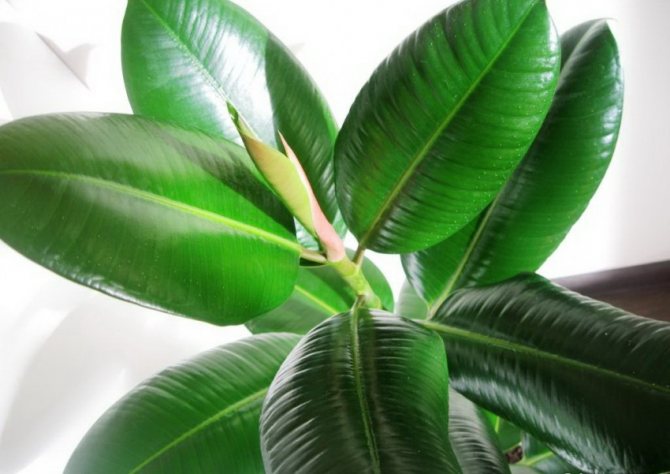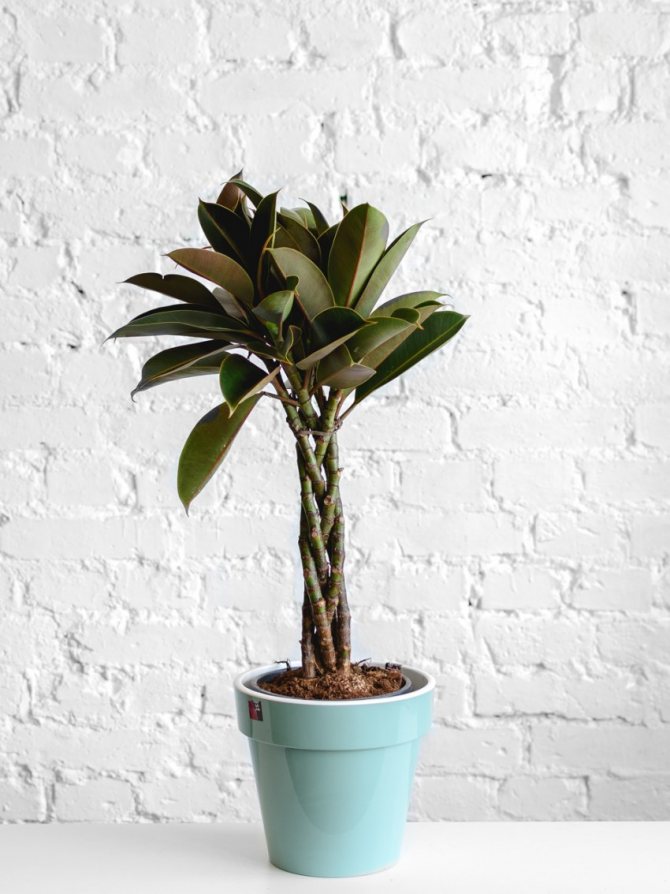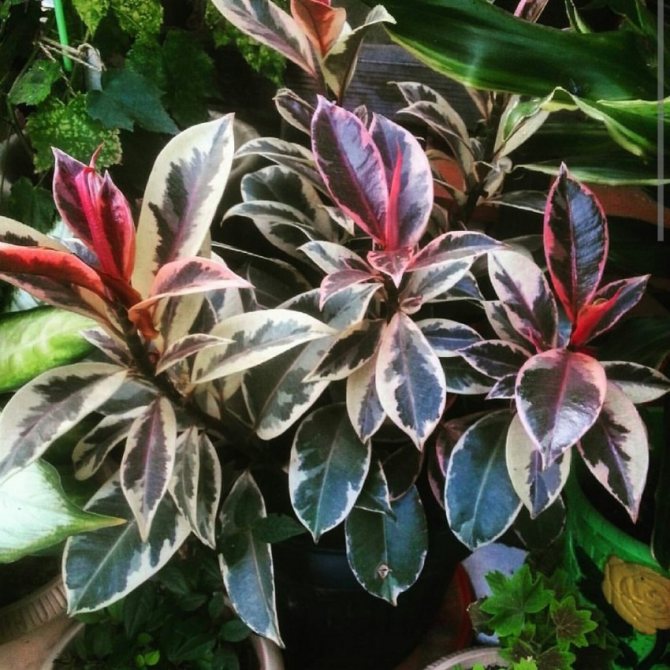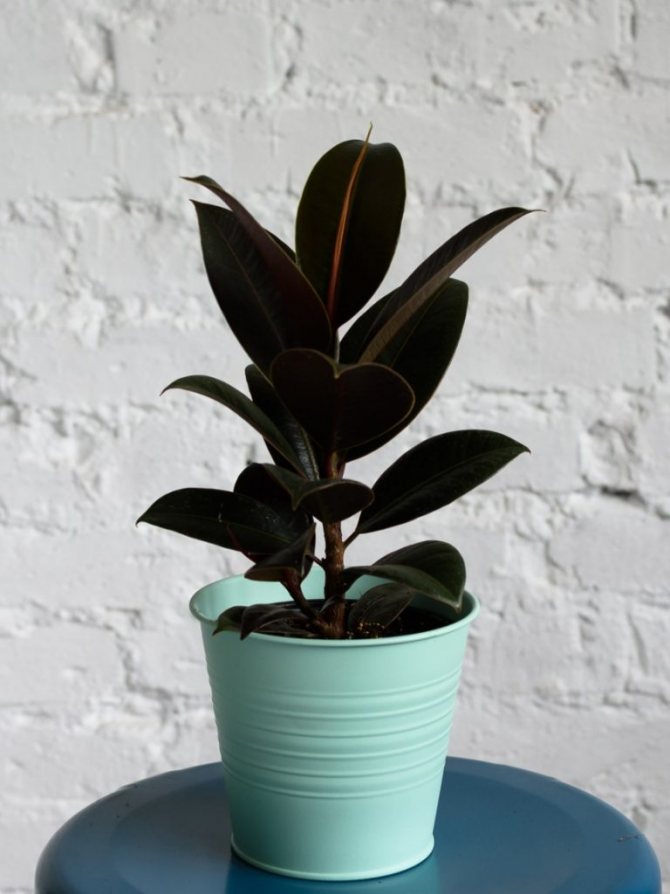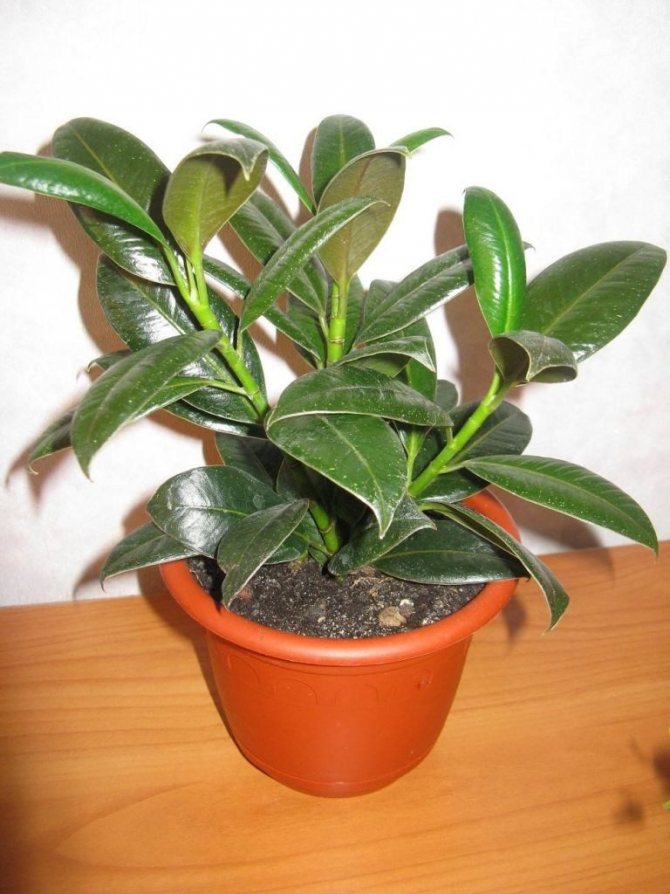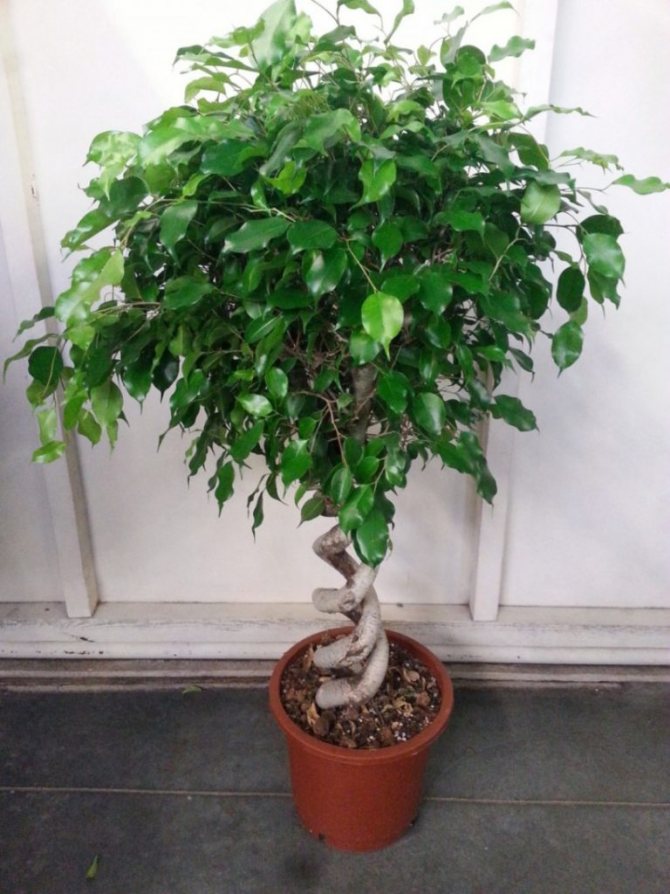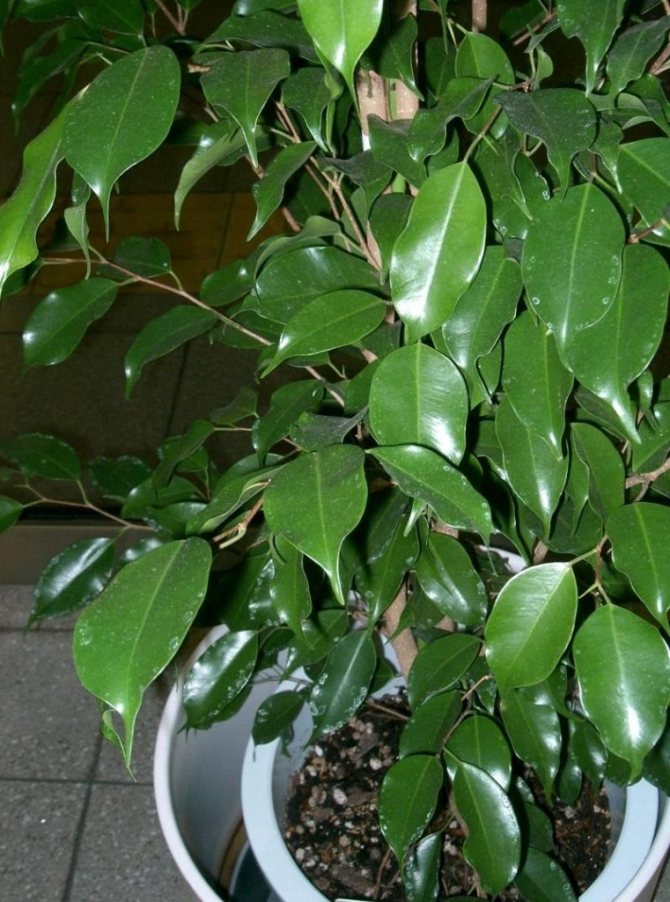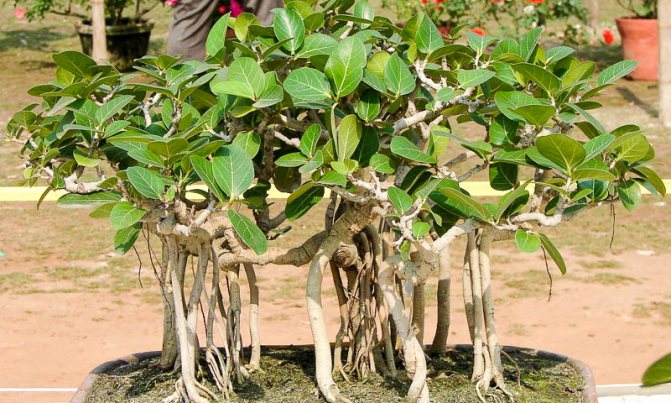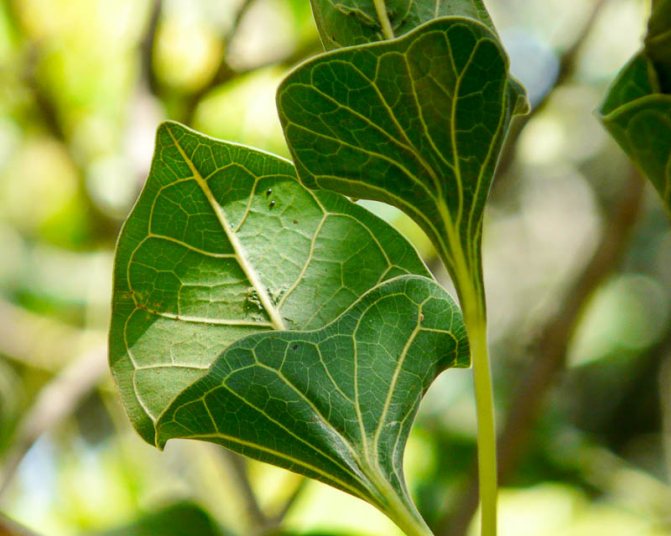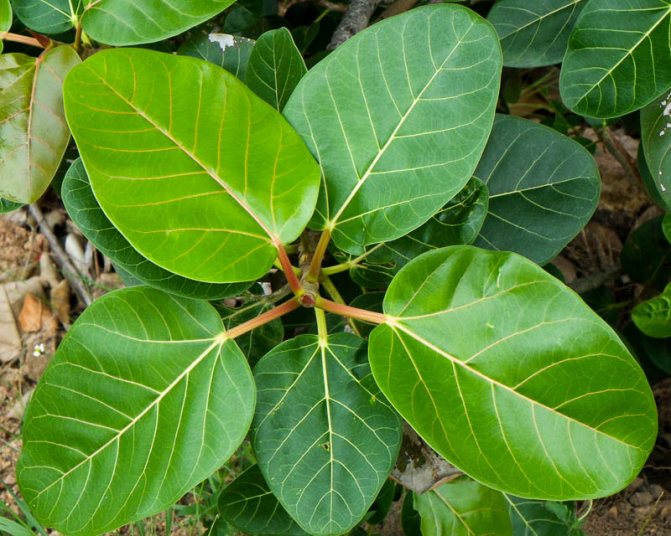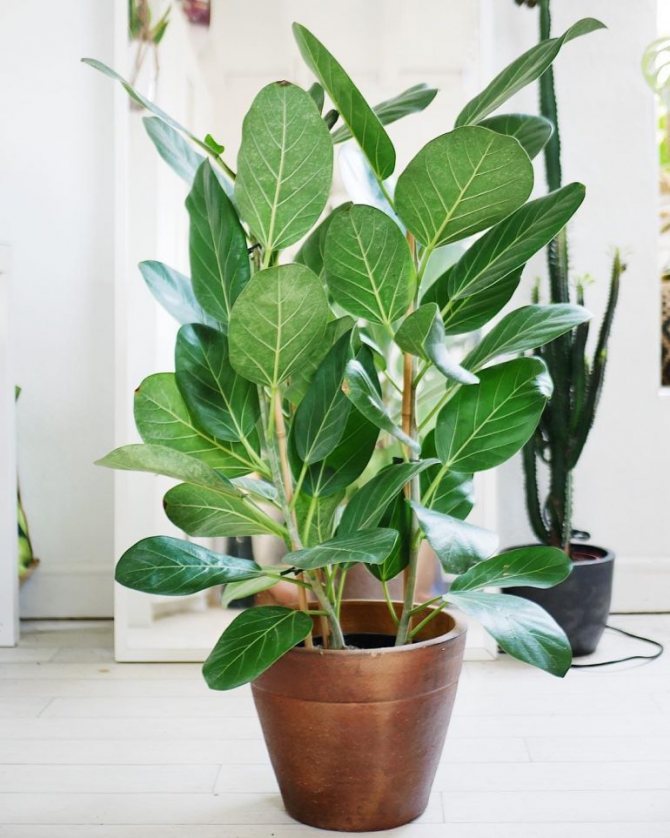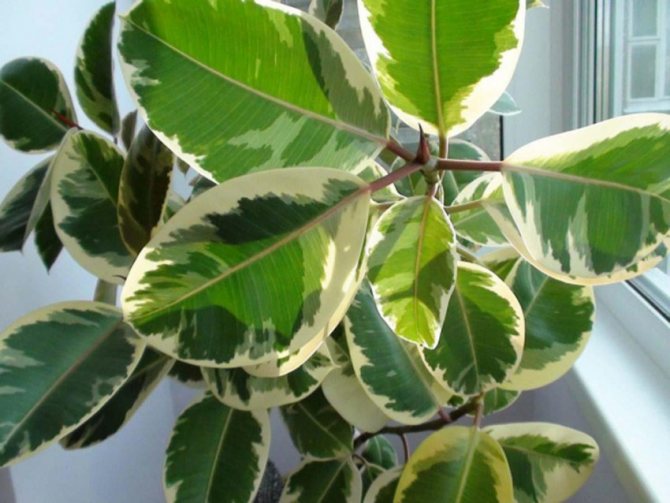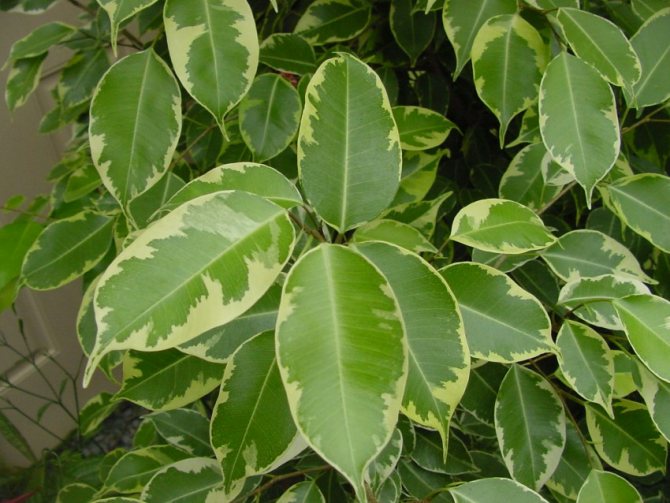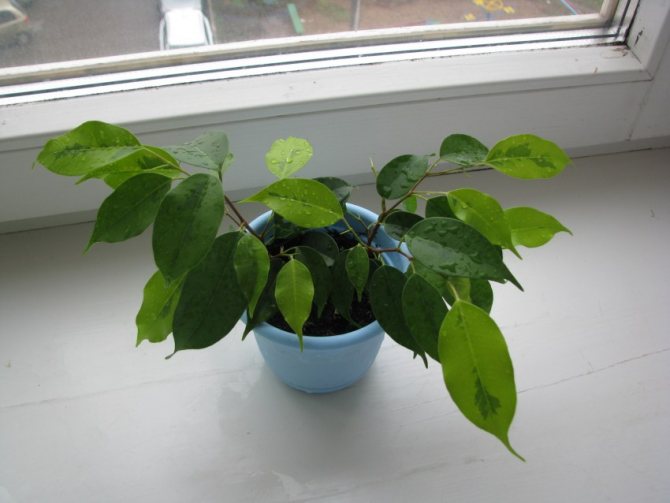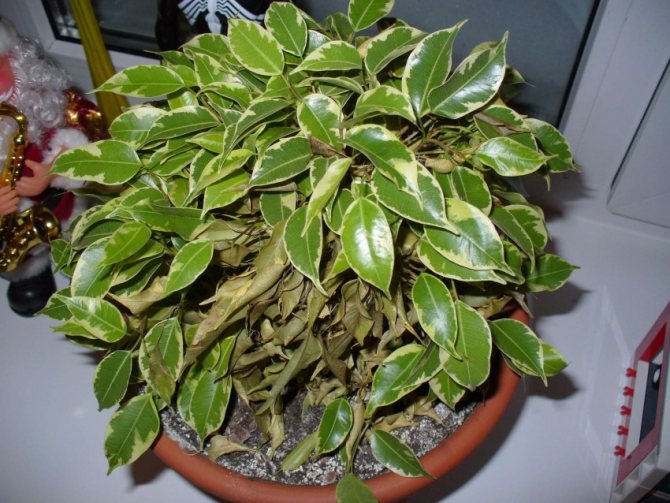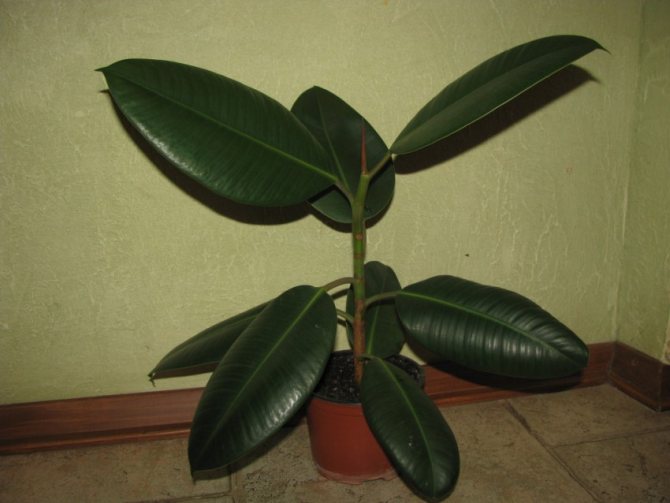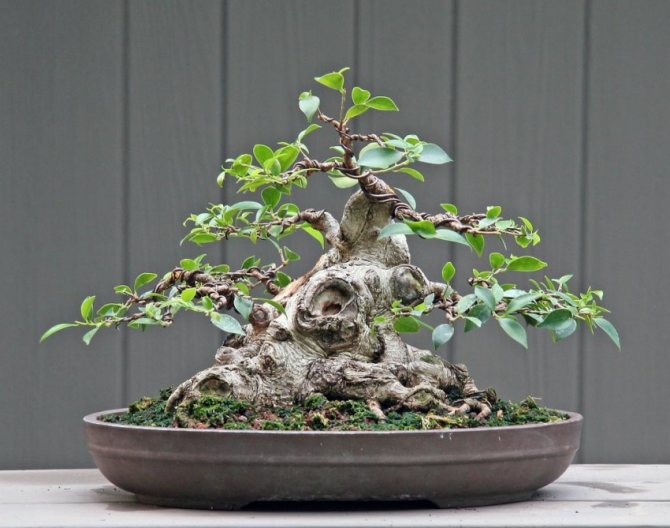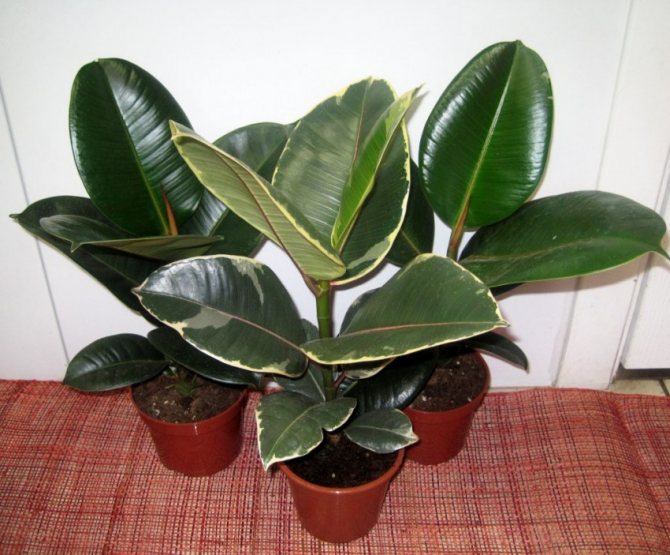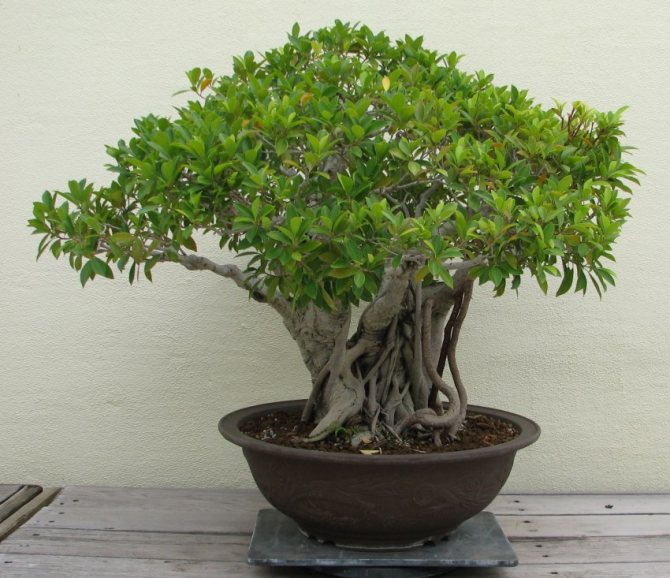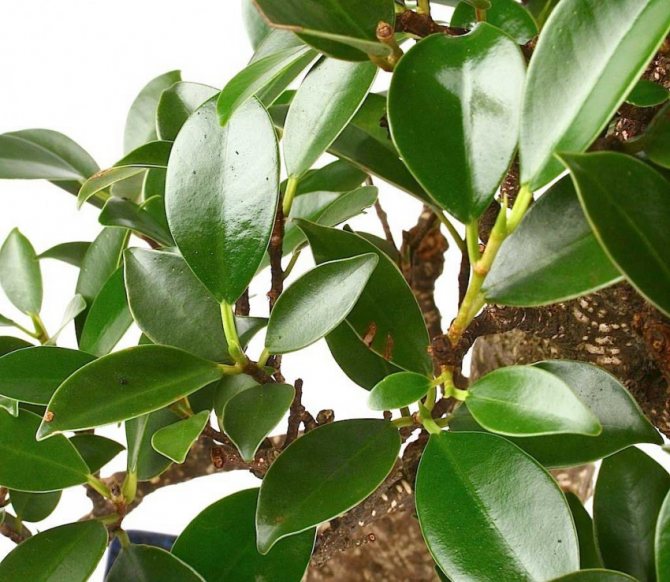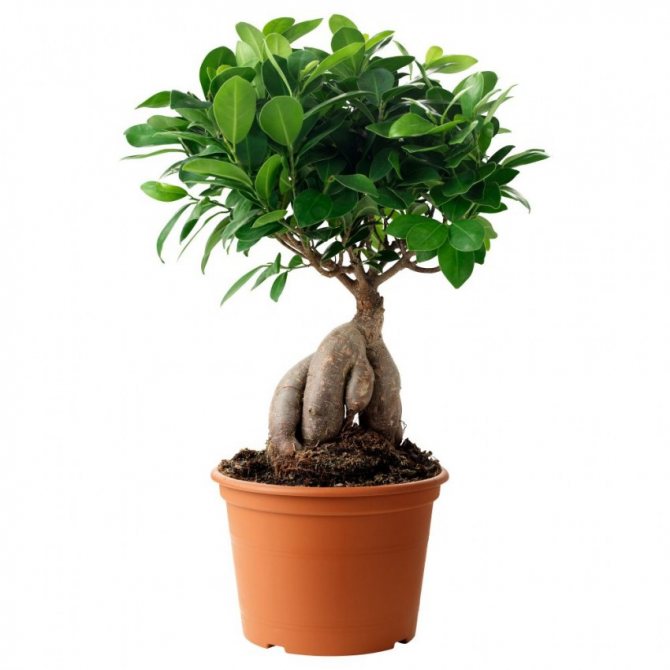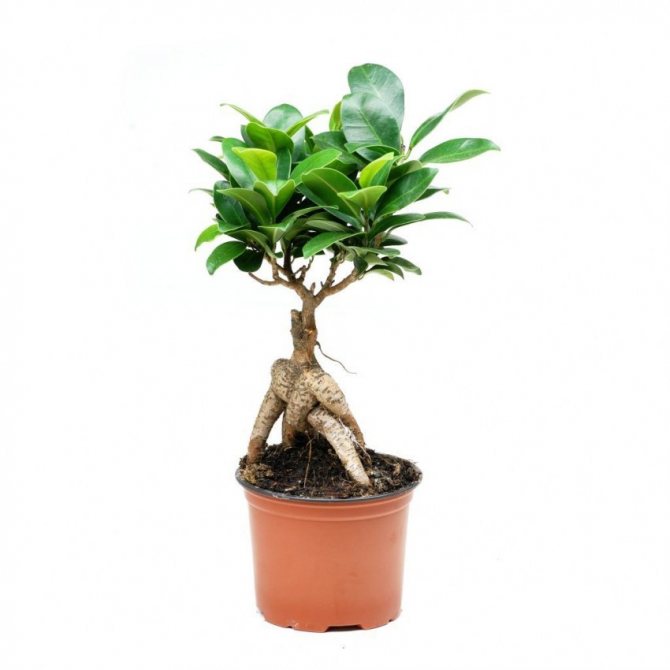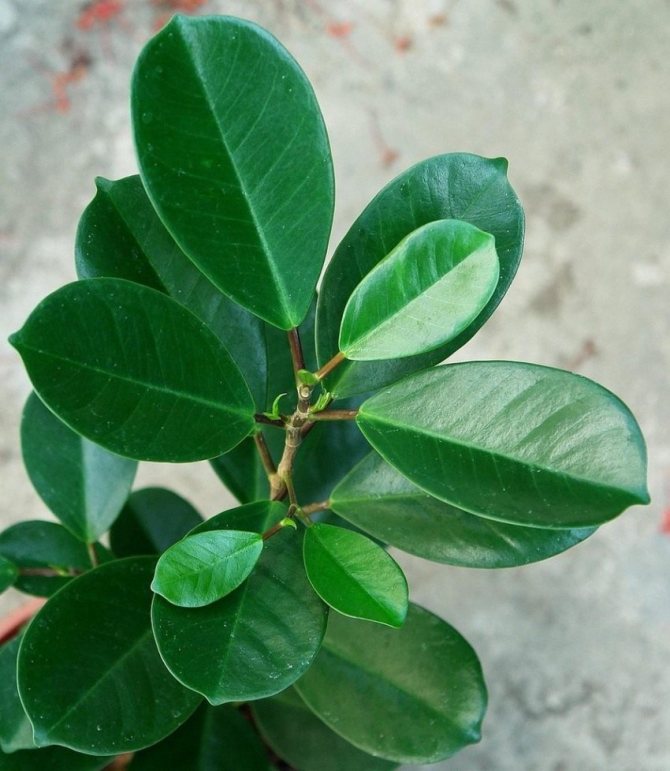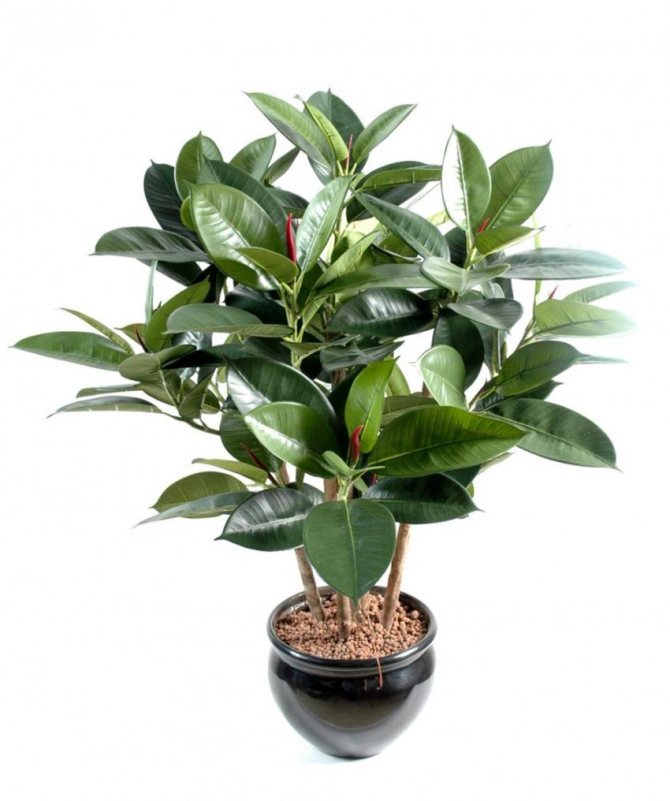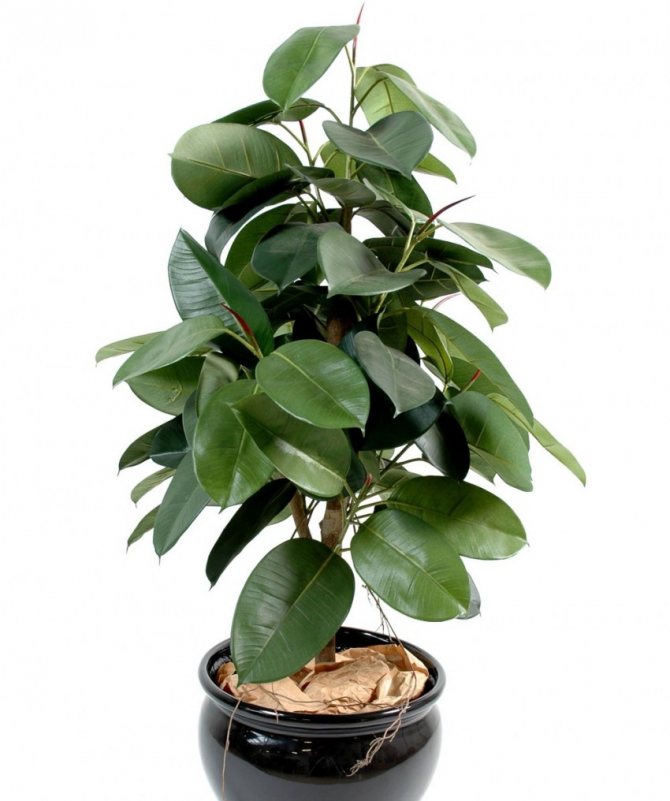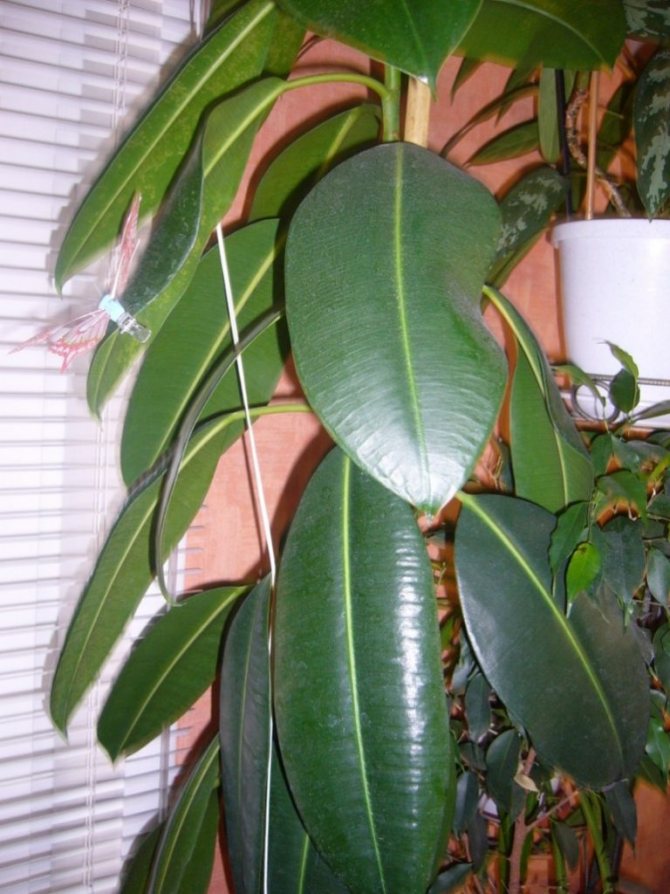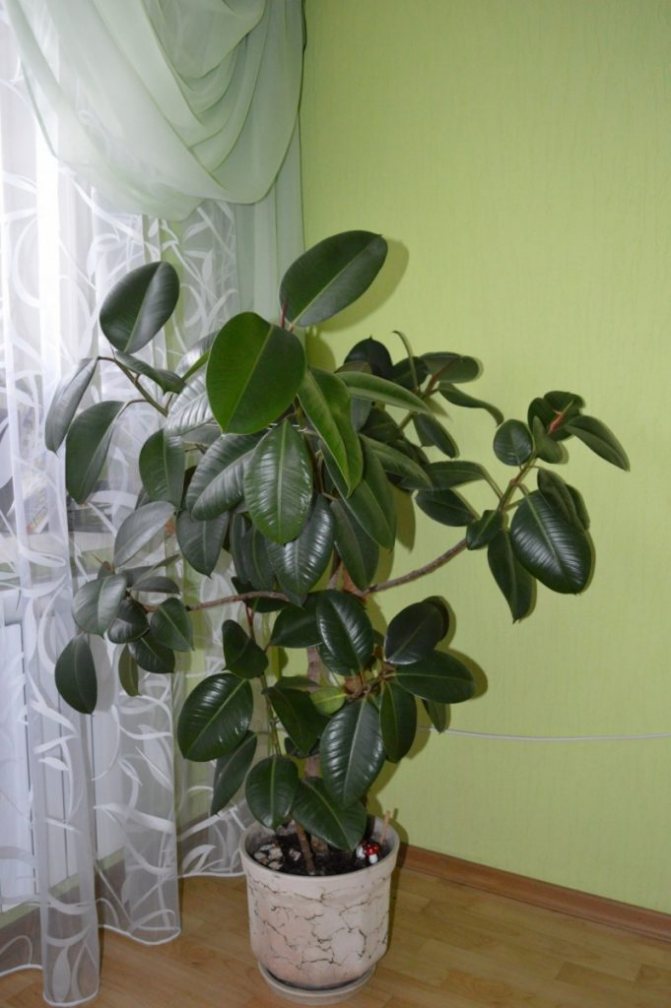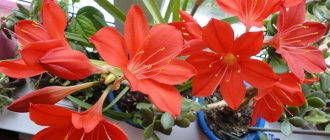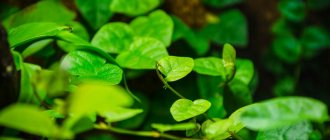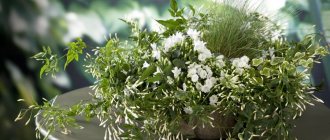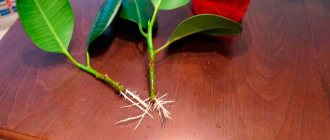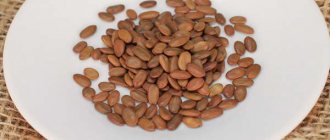This feature gave the plant a second name - banyan ficus. The largest banyan tree grows in the Indian Botanical Garden and occupies about one and a half hectares of area. Cultural indoor specimens reach a height of no more than 1.5-3 m. They have a high development rate - about 60-100 cm per year, and are also perennials.
See also how to grow Benjamin's ficus.
| They have a high development rate - about 60-100 cm per year |
| At home, ficus does not bloom. |
| The plant is easy to grow. Suitable for a beginner. |
| Perennial. |
Ficus features
Belonging to the mulberry subfamily, it attracts attention with its bright green color, amazing decorative foliage. In its natural habitat, ficus can grow as a full-fledged tree. With a powerful root system, bright succulent foliage.
You will love this source!

At home, adapting to unusual living conditions, the plant grows slowly, has acceptable dimensions, and will quite successfully fit into the interior.
Each type of ficus, adapted to life "in captivity" requires specific attention, care, and care. Thanks to this, it will not lose its decorative effect, remain the same lush tree as in its natural habitat. Perhaps in smaller sizes.


Reproduction


When starting to grow a homemade banyan tree, it must be borne in mind that Bengal ficus usually propagates by cuttings,
which need a mixture of sand and peat for normal rooting.
But in order to propagate this culture from seeds, it will take a lot of experience in breeding such crops.
Transfer
At a young age, ficus should be transplanted annually into pots with a large diameter.
For adults, it is enough to replace the topsoil with fresh soil.
Varieties
At home, depending on the variety, ficus can grow as a lush bush or a small ornamental tree. Various photos of this amazing plant can be found everywhere, on any website, catalog, landing page, where the interior design of a shopping center, office or cafe is discussed.
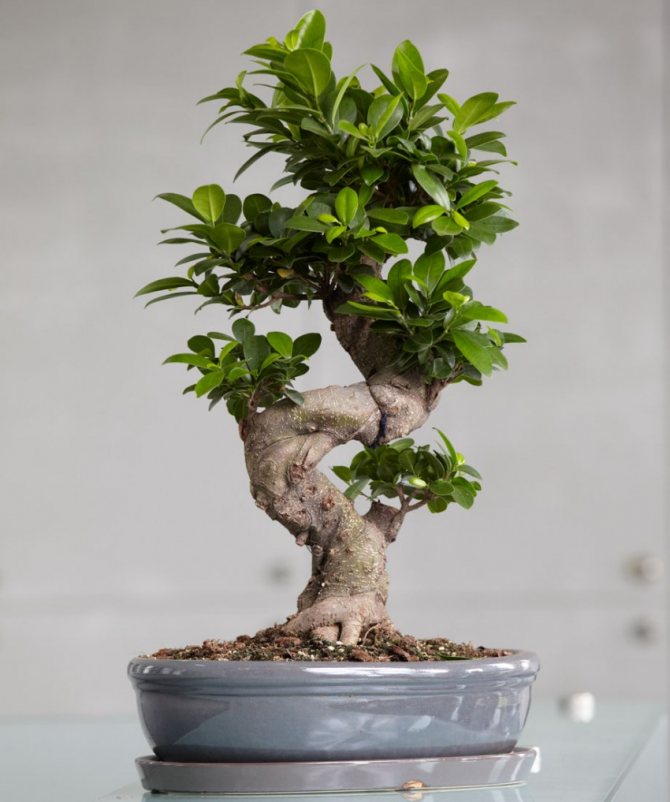

At home, it is quite possible to grow the following types and varieties of ficuses:
- Benedict
- Varietis
- Triangular
- Karika
- Benjamin
- Bengal
- Creeping
- Rubbery
- Dull
- Ginseng
- Rezuta
- Dumbbell
- Amstel
- Large-leaved
- Lyrata
- Moklame
- Ampelny
- Balsamina
- Pumila White Sunny.
- Dwarf.
It is important to understand that there will be certain difficulties in keeping the ficus. This is fallen, yellowed foliage, loss of decorativeness, splendor, damage caused by pests, direct sunlight.


Some of the problems can be overcome quite quickly and successfully, others will take time.
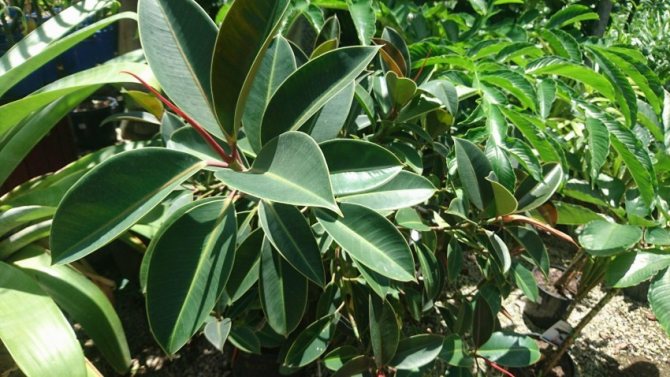

Photo
In the photo ficus "Belgian":
Dwarf ficus varieties
Perhaps these are the most exotic varieties of this plant that came to Russian flower growers from Japan and China. They are all capricious, not everyone can breed them. These varieties of ficuses require special care. They need to create conditions close to their natural habitat - warmth and humidity.
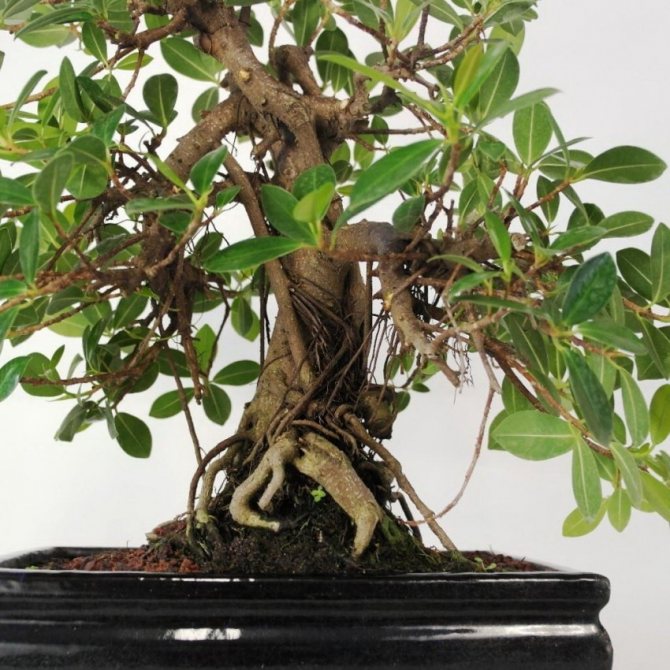

They are very sensitive to dry air, like the absence of direct sunlight, partial shade. We'll have to constantly spray them so that the plants feel comfortable, maintain a comfortable temperature for them.
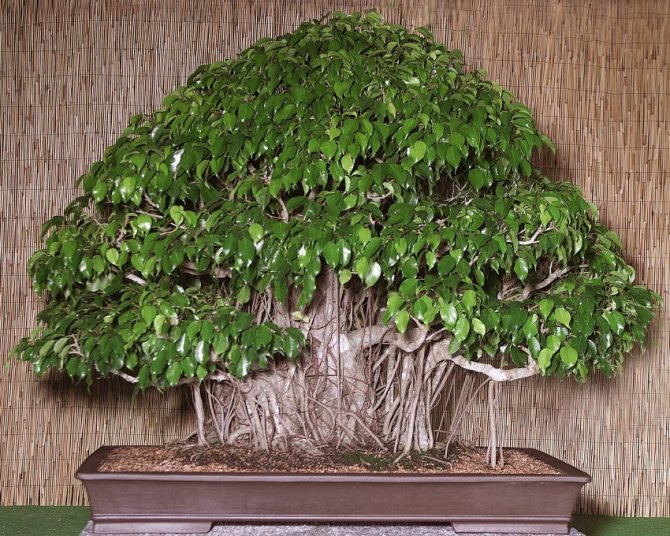

The ficus of these varieties grows rapidly, creating a lush carpet. Correctly pruning it, you can create amazingly shaped compositions - fresh shoots take root easily, touching the ground.
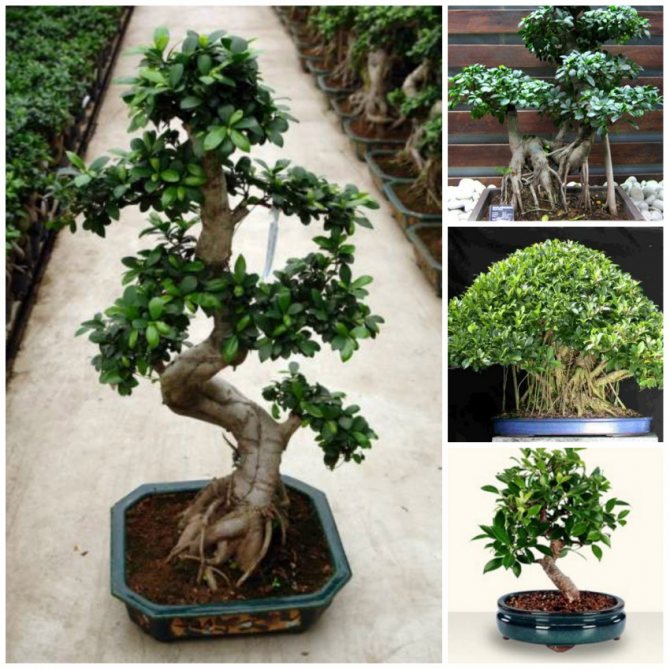

Botanical characteristic
For the ficus Banyan growing in the wild, special external data are inherent - it grows up to 40 m in length.
Formation begins with the growth of aerial roots on the surface of large branches, located in a horizontal direction.
Over a long period, a large number of air layers begin to hang in long garlands. A small part of them reach the soil and take root, forming a separate trunk with the subsequent regrowth of lateral shoots. As a result, a single tree increases the area up to several hectares, forming whole forest thickets.
Indoor plant description:
- the height depends on the conditions created in closed spaces, up to 3 m, it is characterized by active growth, the annual growth is up to 0.6-1.0 m;
- foliage leathery, dense, length up to 20 cm, width up to 6-10 cm, oval shape, dark green color, light streaks, clearly pronounced,
When grown at home, flowering is rarely observed, the budding period usually falls on April-June. The shape of the inflorescences is spherical, formed by yellow flowers of different sexes. Fruits are inedible, small, up to 3 cm in diameter, bright orange in color.
Rubbery
Due to the unusual shape and color of its leaves, this type of ficus is the most popular. His homeland is India. The plant is very demanding for watering. The soil should not dry out. Otherwise, the foliage will fall off. Like all other ficuses, he loves partial shade. He enjoys bathing and spraying. The height can reach two meters.
Suitable microclimate
For Bengal ficus, it is required to create a microclimate similar to the natural tropical one.
Optimum temperature indicators:
- in summer - no higher than 25 ° С;
- in winter - not less than 16 ° С.
If the degree drops below the critical mark, the flower culture will begin to shed its leaves.
Young ficuses are susceptible to extremes. Their insufficiently strong root system freezes in supercooled soil, which disrupts the nutrition of the vegetative mass, and the flower dies. To avoid freezing the houseplant, it is recommended to use pallets in winter and cover the pot with a thick cloth.
Humidity
For home ficus, high humidity is required - from 50% and above. Dry air causes brown spots on the foliage, curling and drying out.
To maintain the indicators at the desired level in winter, when the environment is dry due to the active use of central heating, a container with water installed near the flower pot or the use of professional humidifiers helps.
In summer, in addition to the main watering, they use spraying on the leaf mass with a frequency of up to once a week. In the winter season, indoor ficus is not sprayed.
Illumination
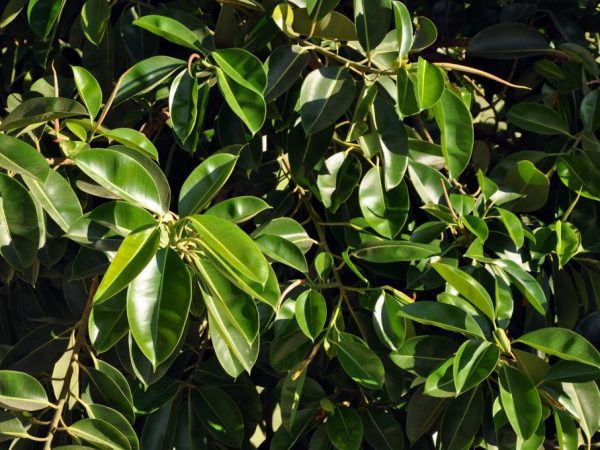

In winter, the flower needs additional light.
The flowerpot should preferably be placed on a sunny side (south or southeast), avoiding direct light. Diffused lighting is recommended.
In the hot period, when the sun is active, the plant is shaded to avoid burns of the vegetative mass.
In winter, the lack of lighting is compensated by the use of fluorescent lamps.
The optimal daylight hours are from 12 hours. With a lack of illumination, the leaves lose contrast, fade and become deformed.
Lyre-shaped
A welcome guest of large spacious rooms. Its shoots, reaching half a meter, resemble a lyre or violin in shape. Hence its name. Like other ficuses, he loves to be sprayed, watered, wiped.


When spots appear on large lyre-shaped leaves, this is a signal that something is wrong. Maybe it's worth moving the plant to another place, it starts having problems with the roots, or, simply, the ficus has picked up some kind of sore.
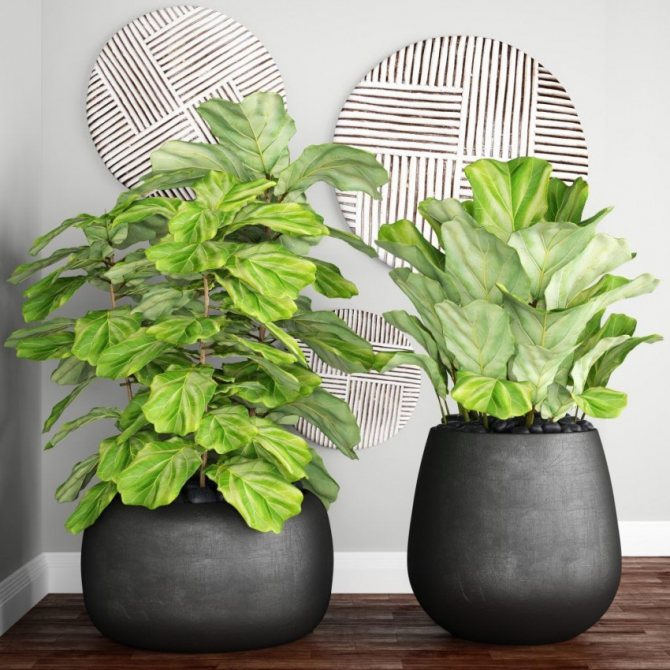

In natural habitat, in the tropics, ficus can reach a height of more than 30 meters. Domesticated species are not so tall. Nevertheless, this beautiful plant, when creating optimal conditions for its development, will become an excellent decoration for any interior, will delight even the most picky, ever-dissatisfied florist with its decorativeness.


Diseases and pests
Most often, pests, to the delight of flower growers, bypass the Bengal ficus.
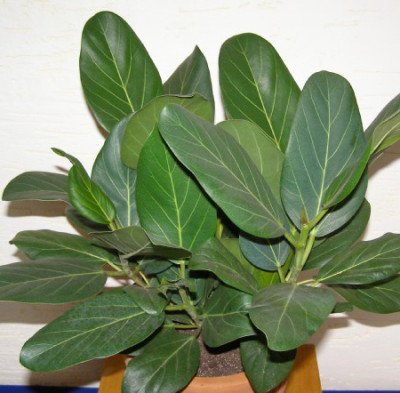

But sometimes it is attacked by a mealybug, spider mite, scale insect.
In this case, the diseased plant should be given a warm shower or washed with a rag followed by chemical treatment.
It is also necessary to monitor the condition of the foliage.
If the individual is old and its lower leaves are crumbling, you do not need to worry.
But if a young plant drops many leaves at once in different places, this is a sign of waterlogging.
Bengal ficus is credited with many magical properties.
But you can only check how true all the legends about the mysterious "Indian guest" are if you manage to grow this amazing tree big and healthy.
Are you thinking of starting a ficus plant at home, but get lost in all the variety of species? We present to your attention articles about the most popular and outstanding representatives: Moklame, Pumila White Sunny, Ali, Microcarpa, Dwarf, Creeping, Ampelny and Triangular, De Dumbbell.
Crown formation


Pruning is done with a secateurs
Thanks to the pruning that the flower tolerates well, you can form a neat crown.
Do not think that cutting off the top will make a gorgeous bush. After manipulation, a dormant bud wakes up and the plant grows up again, only it looks a little twisted.
To get a compact bush, you need to know how to properly trim the ficus.
Form like this: you need to cut off the top, dropping down 5 internodes. The cut stalk can be rooted.
After the plant reaches a certain height, you will need to prune again. Best time - the beginning of spring, when the plant is just starting to grow.
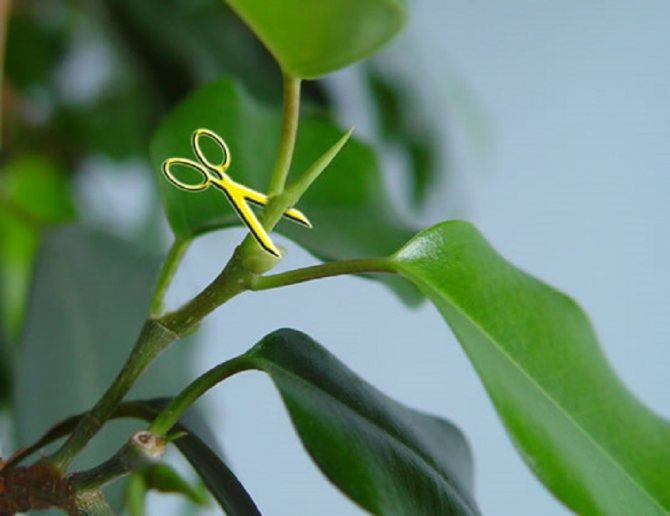

Formation of the crown of rubber ficus
There is one more trick for getting a lush bush: it is recommended to plant several cuttings in one pot.
Some specimens do not want to bush in any way. To pacify their temper, flower growers resort to little tricks.
Firstly, they take an awl and pierce the stem with it 1/3 of the thickness. It is necessary to carry out the procedure, starting from the top, gradually going down.
Secondly, you will need to tilt the top of the ficus down as much as possible. Unable to grow upward, the plant gives rise to the awakening of the dormant bud, which is located above all. After the release of a new shoot, the top is released, and it takes its usual position.
back to menu ↑
See also: Succulents: description, features of growing from seeds, planting, reproduction and care at home, useful properties (70+ Photos & Videos) + Reviews
Cuttings
It reproduces mainly only by the vegetative method. Each perennial shoot is able to take root. For example, a woody perennial shoot can give 4-5 new ones.To do this, it is enough to cut it off, and not necessarily completely, even a couple of sheets from the top of the head will be enough. Visually, it looks like this. We cut off the top with 2 - 4 leaves, approximately along the stem of the appendix 7 cm. Further from the place of cut 7 cm further down and also 2-4 leaves. And so on to the foundation. Each of the slices is a new escape in the future. How does this happen?
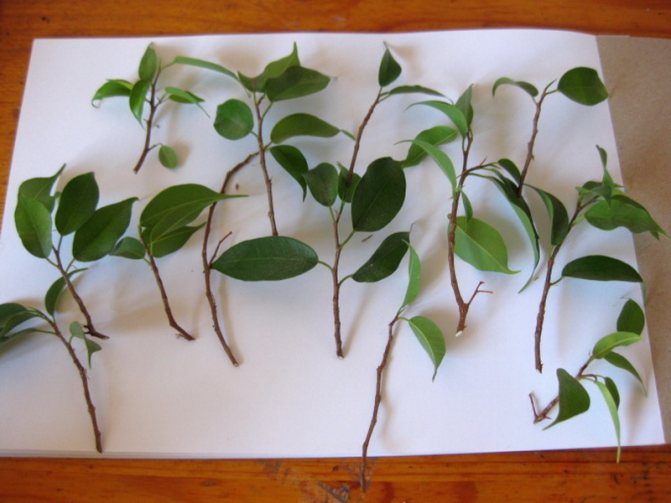

If you look closely, you will see that a bud lives in each axil of the leaf. She is sleeping, at the moment she still lacks food and energy. Because all the energy is used by the flower for the formation of shoots, leaves, growth in general. But by making an incision above the leaf petiole, we stop the movement of nutrients upward in growth and they go to the leaf and bud near it.
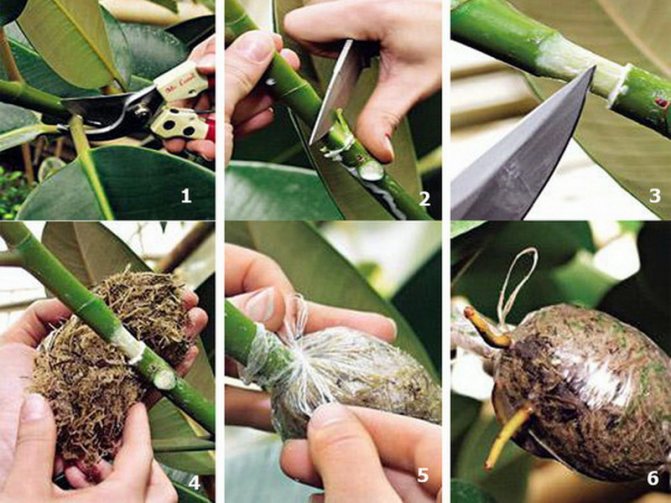

Therefore, after 3-4 days, the leaf with the trunk element can be cut off. The entire crown can be shaped in the same way. When the plant is still young, 3-4 months, gradually cutting off the upper leaves, we ensure the emergence of new shoots from the buds of the lateral leaves. This way we can form any shape that we like.
Signs
Where can we go without them. It is important to remember a simple thing, what we believe in is what happens. There is an idea that it is good to plant a ficus flower in a larger pot. When he sprouts, it is believed that a child will appear in the house. Sometimes it is perceived as a money tree, and if it begins to die, it is thrown away. An analogy works here, threw out the tree - got rid of financial problems. Not bad.
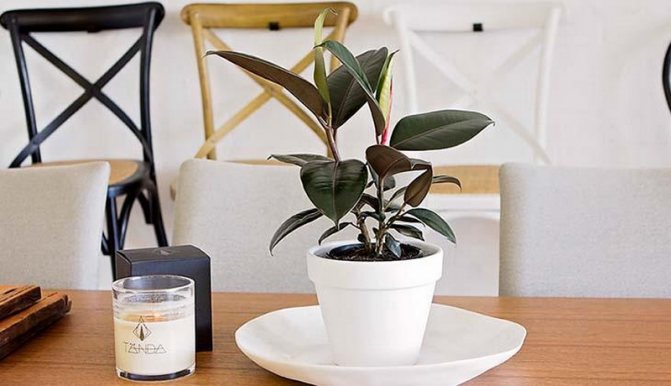

In Ayurveda, ficus is a protection from gossip and evil eyes, a kind of amulet. But there is a nuance. He only protected it in the kitchen, where there are usually many guests. As a bonus, it protects against want, hunger, losses. Not a flower - gold. He is an outsider in the bedroom. But there is also a moment here, if you want an addition, then you need to transplant the sprout into a new pot and put this pot in the bedroom. Of course, take care of him. There is also a separate section of this article about transplantation and reproduction.


It is useful to keep in the house for those who are prone to excesses in food, sleep, spending. This unusual flower has the ability to curb unhealthy impulses. Cleans the energy of the house and protects against negativity. It prevents the entry of low dark energies, blocking them, and keeps a light light aura.
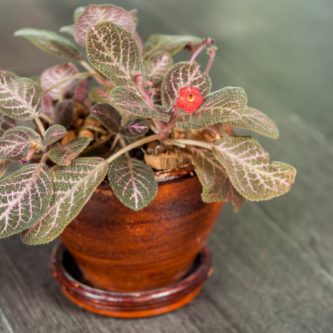

How to grow and care for an episode at home (50 photos)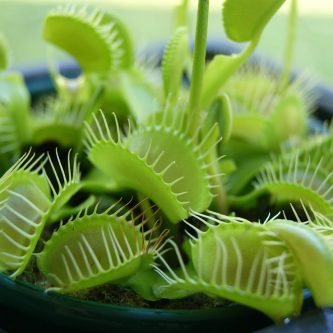

Venus flytrap - benefits in the economy, especially breeding and home care (50 photos)
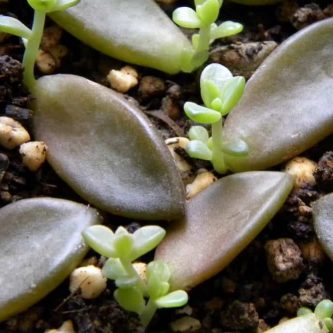

How to properly care for a money tree: transplantation, reproduction, circumcision, disease. 30+ photos, signs
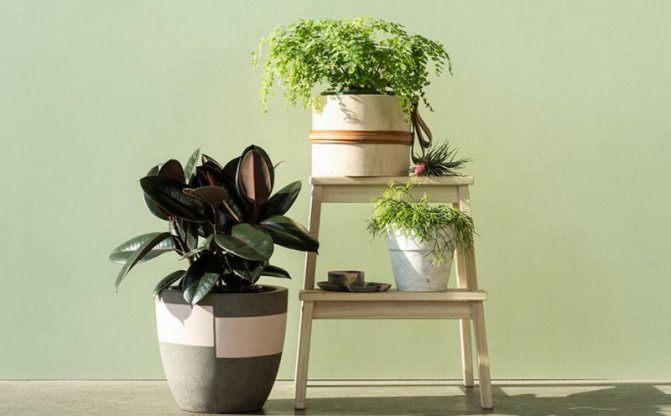

From negative signs. Many women perceive it as a male tree, that is, it is like the owner of the house. And if the girl is not married, but it is not easy to fix this, because the ficus is already, like a husband, and does not allow other men to enter its territory. It is better for a woman to take care of him, since he negatively perceives male energy. True or not, you can only find out empirically. Well, the question of faith, it is important what to say.
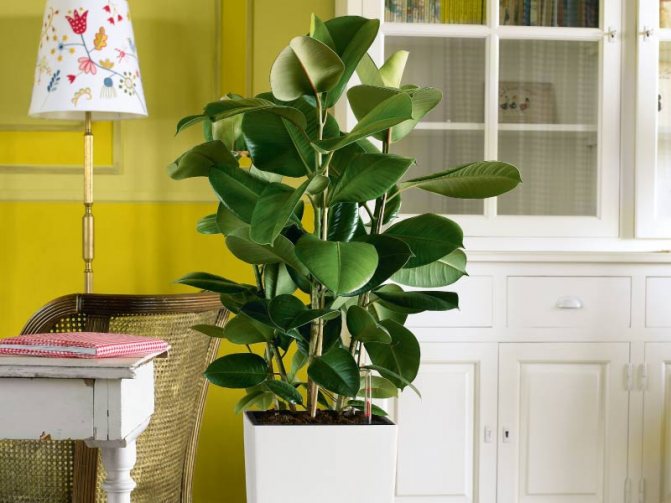

Which one you choose to believe is a private matter for everyone. So keep and cherish your pet and he will take care of you in return. But even if you don’t believe in omens, it doesn’t matter, you can keep him already because he is cute and unpretentious.


So, you are full of positive and open to the reception of the green handsome. Which question to choose?
Interior ideas: show potted flowers with drawings
Large varieties will take their place in corridors, balconies and offices. In this regard, rubber-bearing subspecies are especially popular. Ficus Ali can be grown outdoors in good weather conditions.
If you give the ficus freedom, then it will grow in all directions, taking up the available free space. This can be used to create green walls or zoning a room. Flowers in decorative pots can close the remaining free corner or repair problems
Decorative ficuses can both decorate your desktop and become an addition to the greenhouse on the windowsill.Some varieties of dwarf trees are suitable for growing bonsai counterparts.
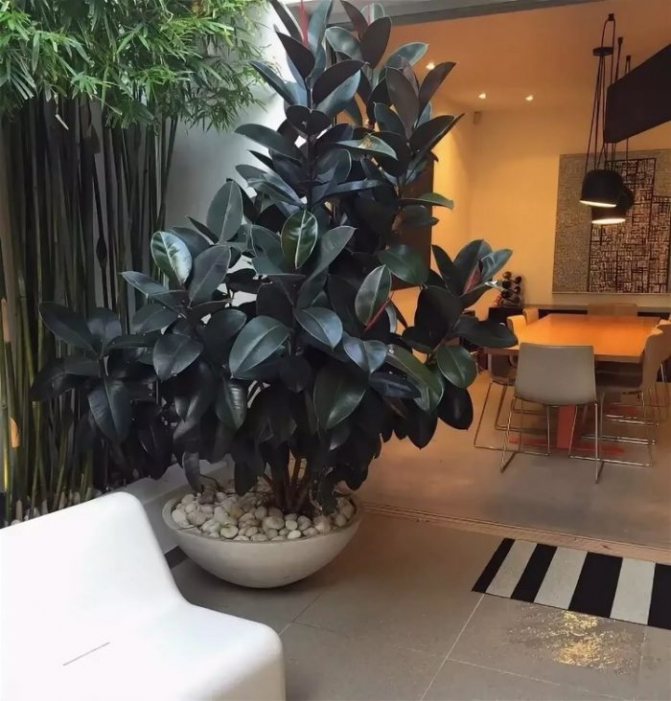

5 / 5 ( 1 vote)
Growing conditions
The tree will grow well if kept in a suitable microclimate. But for this, the plant must be initially healthy.
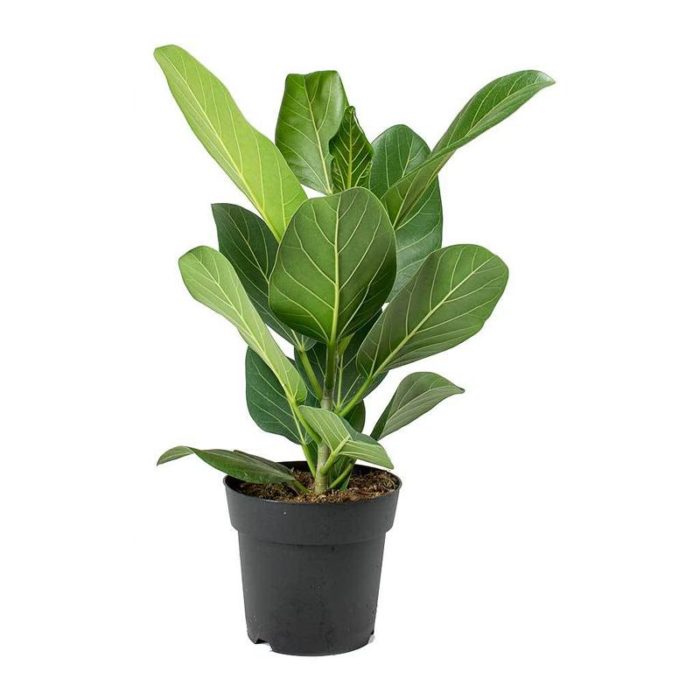

When buying, you should pay attention to the following features:
- it is better to acquire ficus in the warm season;
- young plants adapt more easily to a new place;
- there should be no black or brown bloom on the roots.
In the nursery, flowers are often treated with polishes. Therefore, at home they need to be washed immediately under the shower.
Humidity
Bengal ficus prefers high humidity - in the range of 60-70%. There are several ways to maintain this microclimate:
- Use a special device for humidifying the air. But this is often not recommended, otherwise mold will appear in the room.
- Place 2-3 glasses of water on the side of the pot.
- Spray from a spray bottle. More suitable for young plants.
- Wipe clean with a damp cloth. Thanks to this, dust does not linger on the leaves and they can breathe normally.


The plant can be rinsed in the shower once a month. But at the same time, the water must be warm. This procedure also serves as a good prevention against pests.
Temperature regime
To maintain a normal indoor climate, you need to observe moderation in everything:
- in summer, the temperature should be maintained in the range of + 18-26;
- in winter, +20 degrees is enough;
- during the heating season, the ficus must be protected from overheating - the distance from it to the battery must be at least 3 m;
- no sudden changes in temperature should be allowed.
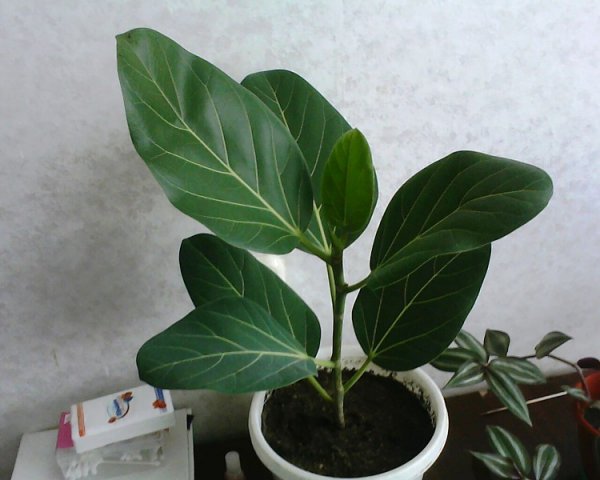

Important! The plant does not tolerate drafts. They slow down its development and cause foliage to fall off.
Where to place?
Ficus is most suitable for growing in a spacious hall or office. If you are breeding it at home, then you should take care of the correct placement:
- The place should be well lit.
- It is better if the sun's rays are diffused. This will protect the plant from burns.
- The best option is the west or east side.


As a last resort, you can put the pot on the southern windowsill. Then the window will have to be shaded.
Possible difficulties
With improper care, the following problems often arise:
- The leaf plates become sluggish. This happens when the room temperature is low.
- The foliage falls sharply. This is the result of improper watering or high air temperatures. But in the offseason, this is considered the norm.
- The leaves turn yellow. This is a consequence of a lack of moisture or exposure to direct sunlight.
- The roots rot and change color quickly. This is a sign of waterlogging.
- The leaves are too small. This happens if the size of the pot is not chosen correctly or the plant does not have enough light.
- The foliage turns pale when the ficus needs minerals.


In order to take timely measures to save the flower, you need to regularly monitor its condition. Then, in the event of negative changes, everything can be easily corrected.
Benefit
Absorbs harmful compounds of dust, bacteria, is able to absorb benzene and recycle formaldehyde, which not everyone can do.
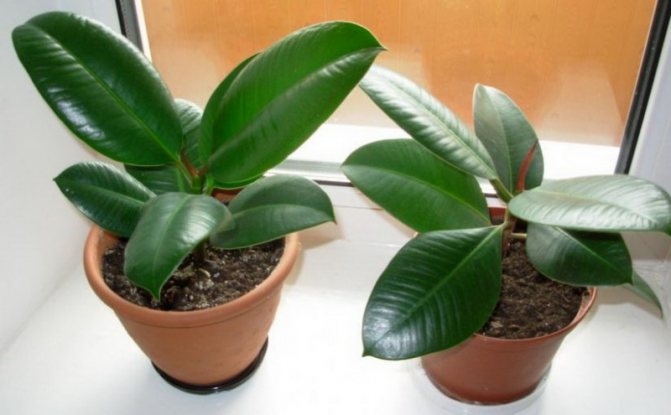

Is it poisonous? Will not harm adults, children, pets. It makes sense to distinguish between the concept of poisonous and not useful. Why? One species, Benjamin in particular, is a strong allergen. It ranks third after domestic animals and the field tick. Possible attacks of bronchial asthma in asthmatics. Therefore, if asthmatics or allergy sufferers live in the house, think hard about whether you need it.
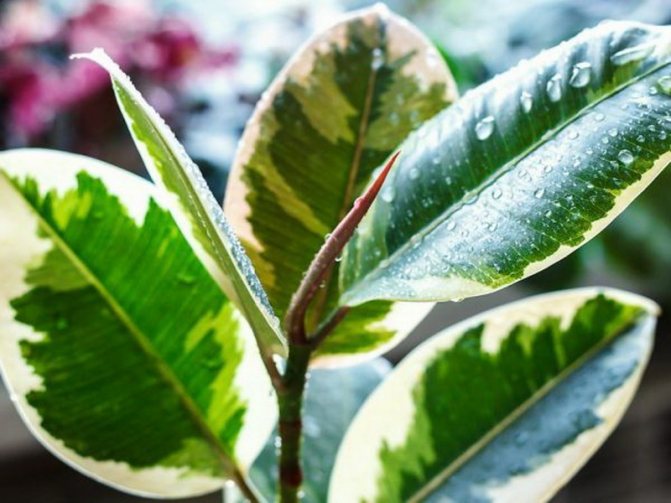

It is poisonous, despite its beneficial properties, and even its use in traditional medicine. It is the juice that is toxic. It has a pleasant white color and looks like milk. In contact with the skin, burning, itching is possible, in allergy sufferers, respectively, allergic reactions.
How to choose a plant when buying
In order for the tree to please the owners in the future and there are no problems in care, it is important to know the basic rules for choosing a plant:
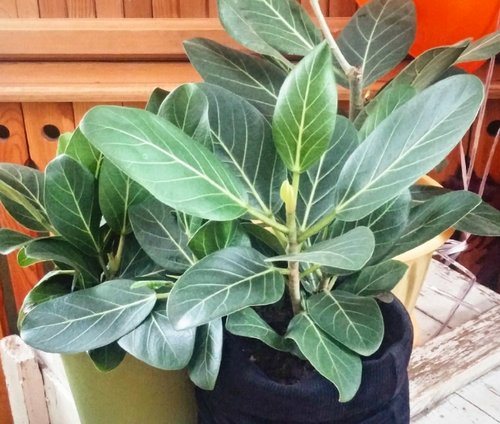

- You should not buy ficus in cold weather. Adaptation during this period is rather difficult.
- Large plants cannot be selected. The older the tree, the more difficult it is for it to adapt to new conditions.
- Healthy sprouts can be checked in this way: shake slightly and pat against the leaves. If leaves fall (2 or more), then this tree is not worth taking.
- The roots of the plant should not be black or dark brown.
Important! In stores, ficus leaves can be treated with polishes. Therefore, after purchasing such trees, it is better to rinse under the shower.



